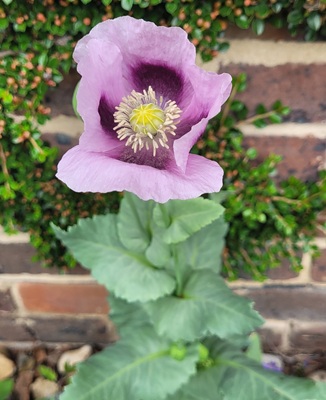Flower Properties
| Property | Value |
|---|---|
| English Name | Opium Poppy |
| MainColor | Magenta |
| PlantType | |
| Growth Type | |
| Season | May |
| ImageUrl | Papaver-002 |
| Photographer | DP |
| Location | Abbots Langley |
| Human Toxicity |
Flower Details
Description
The opium poppy is a tall, elegant annual with grey-green leaves and large blooms that can be white, pink, purple, or red. Its seed capsules are famously round and crowned with a star-shaped disc. This plant has played a significant role in medicine, culture, and history.
Distribution
Native to the eastern Mediterranean, Papaver somniferum is now grown around the world. In the UK, it occasionally appears in gardens or as a casual escapee. While it can be grown legally for ornamental purposes, harvesting opium from it is controlled by law.
Medicinal/Other Uses

This is the species from which opium is derived. It contains powerful alkaloids like morphine, codeine, and thebaine, used in pain relief, cough suppression, and anaesthesia. Only regulated pharmaceutical forms should be used.
Edibility

Despite the narcotic properties of the plant, the mature seeds are entirely safe and edible. Poppy seeds are used in baking (e.g., on rolls and in cakes) and produce a mild, nutty oil.
Human Toxicity

The unripe seed capsules and milky sap are highly toxic and can be dangerous if consumed. Legal restrictions apply to cultivation with intent to extract alkaloids.
Pet Toxicity

Highly toxic to pets (severe sedation, respiratory depression, can be fatal)
Active Compounds
Contains morphine, codeine, papaverine, and other alkaloids in the latex. Seeds contain no narcotics, only healthy oils, proteins, and micronutrients.
